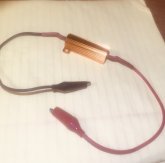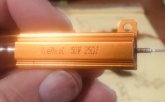What I have observed: (speaking about a 12v system)
I test every BMS with a 4 cell battery and a 3500w pure sine inverter, so I've had the chance to test this from every angle.
1. If the BMS if active but not connected to the inverter, and the inverter caps are discharged, then connecting the wiring to the inverter produces a large spark, and the BMS usually remains active, no faults. Sometime this triggers a "short circuit protect" fault. This starts a 32 second delay, after which the BMS will try to reconnect. If it is still wired to the inverter there will be another inrush surge, and it may or may not trigger another fault.
2. If the BMS is inactive and is wired to the inverter, then when the BMS becomes active (either by plugging in the balance connector, or enabling discharge via the app), it will usually trigger the "short circuit protect" fault. It will try again in 32 seconds.
Sometimes the BMS will be able to charge the caps and come online without a fault, sometimes not. Sometimes it succeeds after a few attempts.
There are a few factors:
Is the inverter switched on? If so it will discharge itself between attempts and the BMS may never catch up.
The size of the inverter matters, bigger inverter, bigger caps, bigger surge.
The BMS does not have a soft start circuit of any kind.
My suggestion, if you get down to the discharge cutoff, is to switch off the inverter until the system is charged up a bit and the BMS re enables discharging.
oh, and if I switch off the inverter before disconnecting, the caps stay charged for days. No inrush next time.





